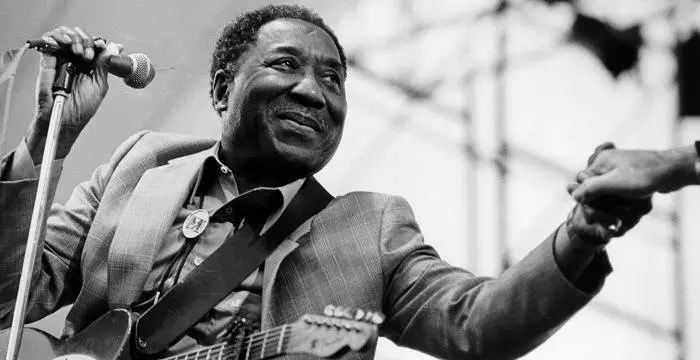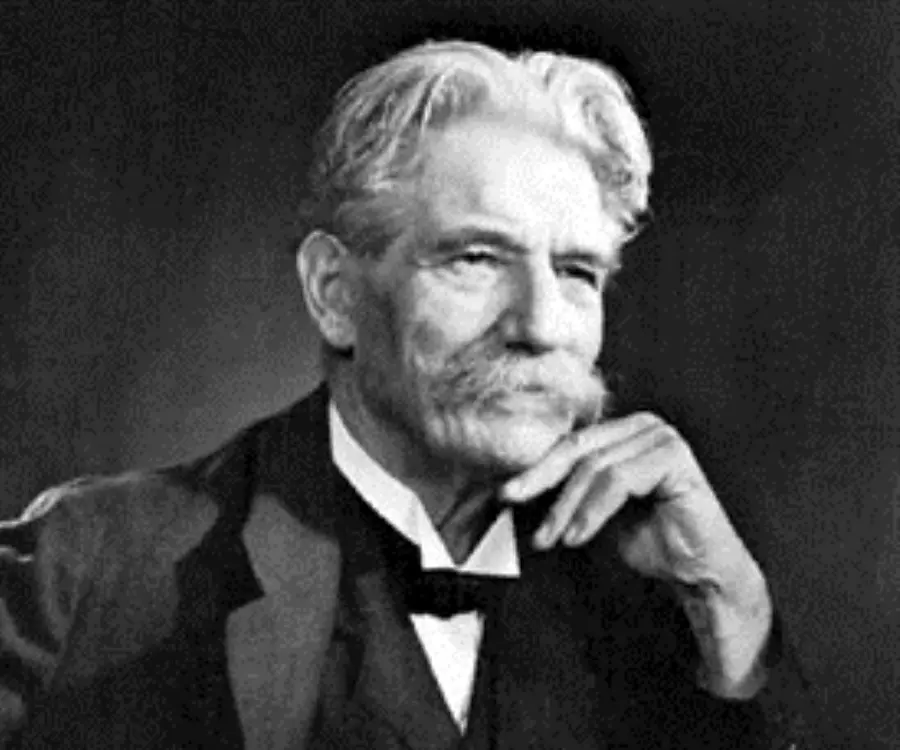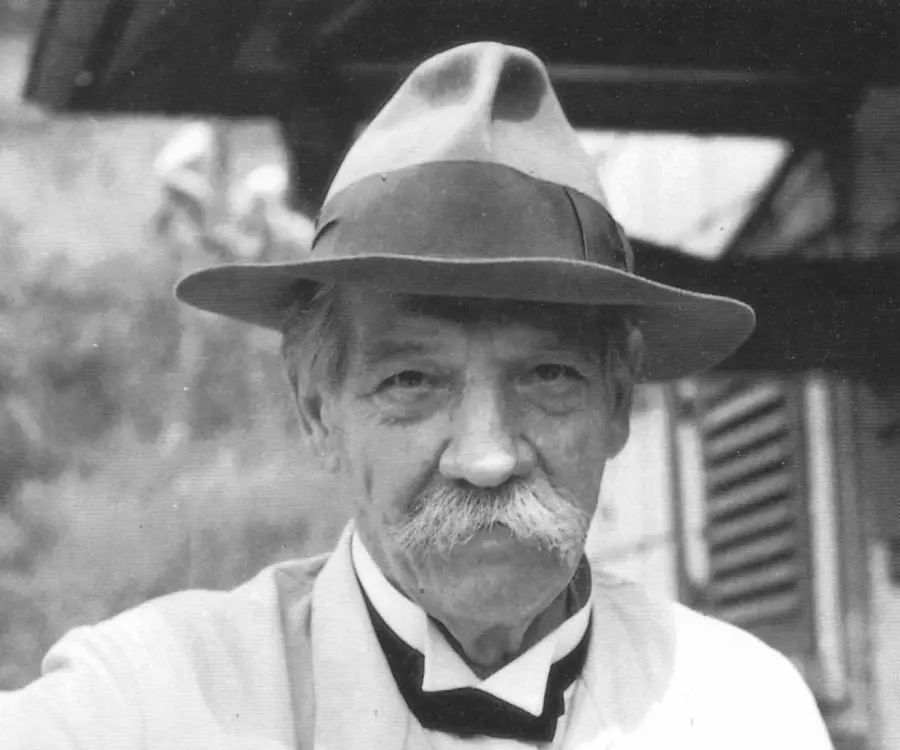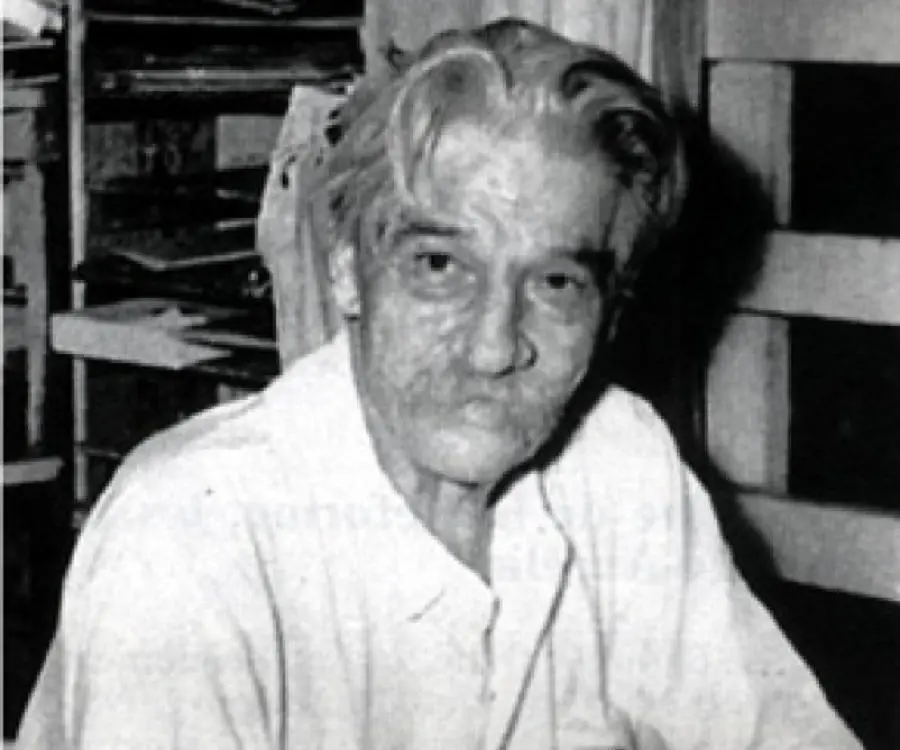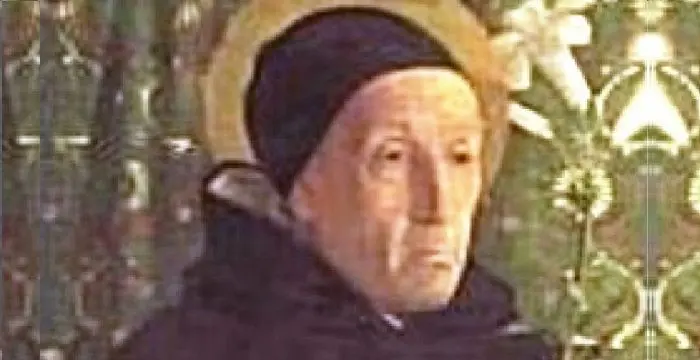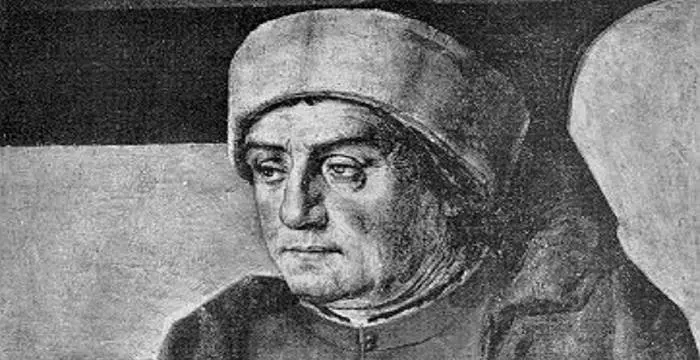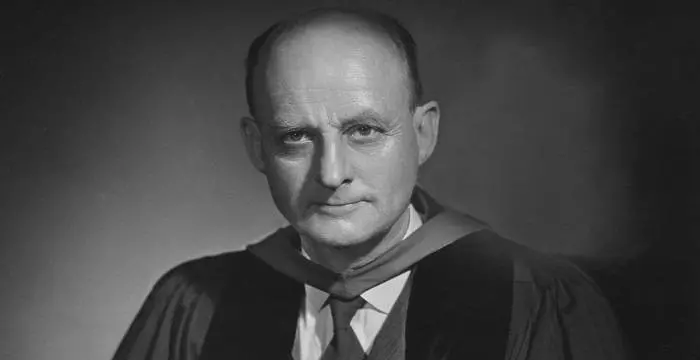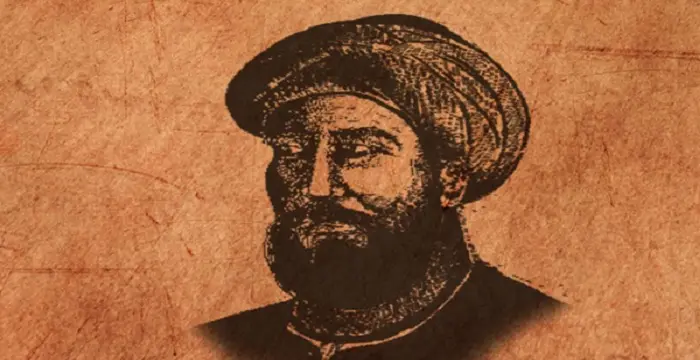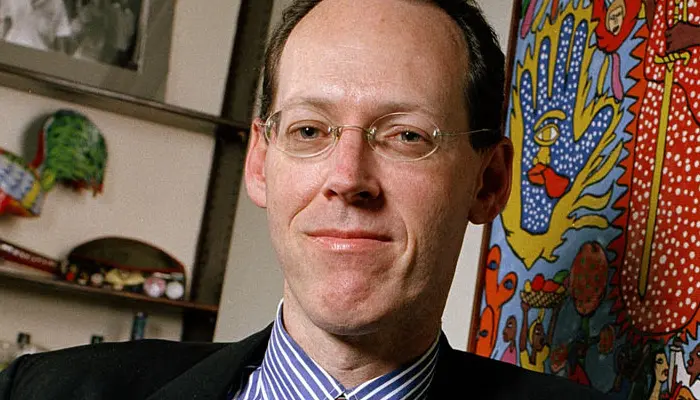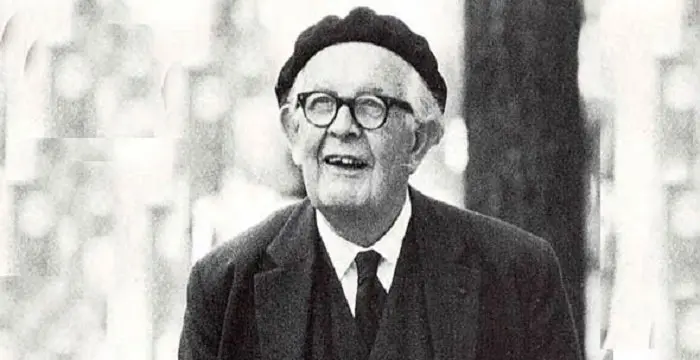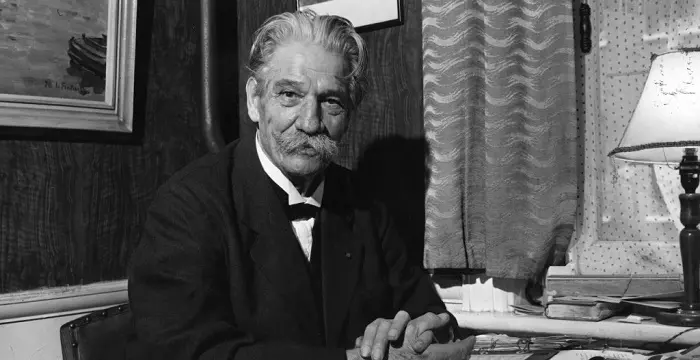
Albert Schweitzer - Musicians, Timeline and Facts
Albert Schweitzer's Personal Details
Albert Schweitzer was a German born French theologian, organist, philosopher, physician, and medical missionary
| Information | Detail |
|---|---|
| Birthday | January 14, 1875 |
| Died on | September 4, 1965 |
| Nationality | French |
| Famous | Nobel Peace Prize, Intellectuals & Academics, Philosophers, Theologians, Musicians, Physicians |
| Spouses | Helene Bresslau |
| Siblings | Emma Schweitzer, Louisa Schweitzer, Lulie Adele Schweitzer, Marguerit Schweitzer, Paul Schweitzer |
| Childrens | Rhena Schweitzer Miller |
| Universities |
|
| Birth Place | Kaysersberg |
| Religion | Lutheran |
| Gender | Male |
| Father | Louis Théophile |
| Sun Sign | Capricorn |
| Born in | Kaysersberg |
| Famous as | Philosopher, Theologian |
| Died at Age | 90 |
// Famous Musicians
Ted Nugent
Ted Nugent is a hard rock musician known for his hits ‘Stranglehold’ and ‘Cat Scratch Fever’. This biography of Ted Nugent provides detailed information about his childhood, life, achievements, works & timeline.
Muddy Waters
Muddy Waters was a blues musician referred to as the 'father of modern Chicago blues.' Check out this biography to know about his childhood, family life, achievements and fun facts about him.
Travis Bacon
Travis Bacon is an American musician and actor, better known as the son of veteran actors Kevin Bacon and Kyra Sedgwick. Find more about his family, birthday, etc.
Albert Schweitzer's photo
Who is Albert Schweitzer?
Albert Schweitzer was a German born French theologian, organist, philosopher, physician, and medical missionary. His founded the Albert Schweitzer Hospital in Lambaréné, now in Gabon, west central Africa (then French Equatorial Africa). Schweitzer is also greatly known as a music scholar and organist who was a profound scholar of the music of German composer Johann Sebastian Bach. Many of his Bach recordings are currently available on CD. He started and greatly influenced the Organ reform movement. Schweitzer was the founder of universal ethical philosophy and universal reality. He is best known for challenging the secular view of Jesus as depicted by historical-critical methodology present during his time in certain academic circles, as well as the traditional Christian view, depicting a Jesus Christ who saw himself as the world-saving Messiah. He won the 1952 Nobel Peace Prize for his philosophy of “Reverence for Life”. Several films have been made on Albert Schweitzer’s life.
// Famous Intellectuals & Academics
Bertil Gotthard Ohlin
Bertil Gotthard Ohlin was a famous Swedish economist. This biography profiles his childhood, family life & achievements.
Emily Greene Balch
Emily Greene Balch was an American economist, sociologist and pacifist who won the 1946 Nobel Peace Prize. This biography of Emily Greene Balch provides detailed information about her childhood, life, achievements, works & timeline.
Martin Buber
One of the greatest philosophers to have ever walked on earth, Martin Buber contributions to philosophy is a long-standing one. Explore all about his profile, childhood, life and timeline here.
Childhood & Early Life
Albert Schweitzer was born on 14 January 1875 in Kaysersberg, a little village in Upper Alsace, where his father, Louise Schweitzer, was a pastor of a small Protestant congregation. His mother, Adèle nee Schillinger, was the daughter of a pastor from Muhlbach.
Albert was born second of his parents’ five surviving children, having an elder sister, senior to him by one year. Subsequently three more daughters and a son was born to his parents; but the sixth child, Emma, died in infancy. Albert himself was born very weak.
Six months after his birth, Louise Schweitzer moved to Gunsbach, another village in Alsace. It was here that Albert began to recoup his health, growing up strong and healthy, enjoying a happy childhood with his four siblings; Louisa, Lulie Adele, Marguerit, and Paul Schweitzer.
Little Albert began his education at the village school, where he studied under Father Iltis until the age of ten, learning a great deal without exertion from him. But even before that he started taking his lessons in music from his father.
As the pastor’s son, he had to walk an extra mile to be accepted by the village boys. It meant refusing to wear a newly made overcoat or a fashionable hat that his mother wanted to buy him because none of the village boys wore them.
In spite of his efforts to be an equal he really never achieved his goal. Whenever there was a quarrel, he was taunted as a ‘gentleman’s son’. Nonetheless, these years taught him a few important lessons, the most important of which was to accept any unknown situation without illusion.
The religious tradition in which he was raised also cast an important influence on his life. The parish church of Gunsbach was shared by the Protestant and Catholic congregations, who held prayers at different times on Sundays. From this he learned the ideal of unity of Faith and Purpose.
In 1885, 10 year old Albert was sent to live with his granduncle at Mulhouse to be educated at its excellent gymnasium. Simultaneously, he studied organ at the Protestant with organist, Eugène Munch, whose enthusiasm for the music of Richard Wagner greatly influenced young Albert.
In 1893, Albert Schweitzer received his school leaving certificate and entered the Theological College of St. Thomas under Kaiser Wilhelm University, now known as University of Strasbourg, with Protestant theology and philosophy. Simultaneously he also received instruction in piano and counterpoint from Professor Gustav Jacobsthal.
In 1894, he had to go for his one year compulsory military service. On his return, he resumed his studies in theology and music, concurrently, attending the operas of Richard Wagner, visiting Bayreuth Festival in 1896.
In 1898, he went to Paris to complete his PhD dissertation at the Sorbonne. Here too he remained preoccupied with music, often meeting Aristide Cavaillé-Coll, a distinguished organ builder and studying music with Charles-Marie Widor and piano with Marie Jaëll.
In 1899, Schweitzer returned to Strasbourg, where he defended his doctoral dissertation, ‘The Religious Philosophy of Kant’, earning his PhD in Philosophy. Next in 1900, he received his licentiate in theology. By then, he had already started serving as a deacon at the Church of St. Nicholas in Strasbourg.
Early Career
In 1901, Albert Schweitzer began his career as a provisional principle at his alma mater, the Theological College of St. Thomas; the position was made permanent in 1903. All along, he continued to preach at the Church of St. Nicholas, rising to the post of curate.
In spite of such preoccupations, music remained an integral part of his life. In 1899, Charles-Marie Widor had asked Schweitzer to write on the great musician, Johann Sebastian Bach.
Working on the theme, he published ‘J. S. Bach: Le Musicien-Poète’, in 1905. Written in French, the book generated great interest among the German-speaking readers. Instead of translating it, Schweitzer decided to write a new book. Entitled ‘J. S. Bach’, it was published in two volumes in 1908. Meanwhile in 1906, he published another book, this time on organ building and playing.
Also in 1906, his first theological work, ‘Geschichte der Leben-Jesu-Forschung’ (History of Life-of-Jesus) was published, generating immense interest. In 1910, it was translated into English by William Montgomery. Entitled ‘The Quest of Historical Jesus’, it made Schweitzer famous in English-speaking world.
In Africa
It is not known exactly when, but sometime around 1909, Schweitzer gave up his successful career to study medicine at the University of Strasbourg with the aim of serving in Africa. He had declared his intention for such work back in 1905 and had been studying in private since then.
Working hard, he completed his courses by December 1911, receiving his degree in Doctorate of Medicine in 1912. Meanwhile, he had raised enough money by holding concerts and also from sales of his books to establish a hospital in Africa.
In the spring of 1913, Albert Schweitzer left for Lambaréné in the Gabon province of French Equatorial Africa, along with his wife, Hélène Bresslau, a trained nurse. There they set up their hospital in a chicken hut on the banks of the Ogooué (Ogowe) River at the edge of the forest.
Although the funds were scarce and the equipments primitive, they began to treat thousands of Africans, thronging their hospital from far and near. By the autumn of 1913, they had their hospital rooms, which included an operation theatre, made out of corrugated iron.
In 1914, with the start of the First World War, Schweitzer and his wife, being German citizen on French soil, were put under the supervision of the French military. However, they continued their work until 1917, when he became ill from exhaustion and anemia. Thereafter, they were moved to France.
The Schweitzers were first interned at Garaison and then from March 1918 in Saint-Rémy-de-Provence, before being sent home in Alsace in July 1918. Here he was declared free. Subsequently, he became a French citizen.
Schweitzer remained in Europe for next six years, raising fund for his hospital in Africa by giving lectures and organ concerts. He also took further medical courses and wrote number of books.
In 1922, he gave number of lectures in England. From the Dale Memorial Lectures given in Oxford University, appeared two of his important works, ‘The Decay and Restoration of Civilization’ and ‘Civilization and Ethics’. Published separately in 1923, they were later included in ‘Philosophy of Life’ as volume I and II.
From the series of lectures presented during February 1922 to the theology and missionary students at Selly Oak Colleges in Birmingham, appeared another of his important works, ‘Christianity and the Religions of the World’. This too was published in 1923 along with his fourth book, ‘On the Edge of the Primeval Forest’.
In 1924, he returned alone to Lambaréné. With funds earned from royalties and appearing fees, he immediately set out to rebuild the structure and reestablished his hospital. Subsequently, he also began to receive donations from all over the world.
By 1925-1926, with other medical staff joining the hospital, it took up the shape of a village, where Schweitzer was not only a doctor and surgeon, but also an administrator, buildings superintendent and pastor of a congregation. Also in 1925, he had his ‘Memoirs of Childhood and Youth’ published.
In 1927, he went to Europe for two years. This time, he was able to leave behind a more organized hospital and therefore, his staff was able to carry on his work until he returned in 1929.
In spite of the busy schedule, Schweitzer continued to write, publishing another of his important theological work, ‘The Mysticism of Paul the Apostle’ in 1930.
In 1931, he published his autobiography, ‘Aus meinem Leben und Denken’ (Out of My Life and Thought).
In 1932, he returned again to Europe, giving lectures and organ recitals throughout the continent. This was also the time when he possibly restarted editing of Bach’s which he began in 1912.
Continuing to travel and write, Schweitzer published another of his important work, ‘Indian Thought and its Development’. However from 1937 to 1948, he was forced to remain at Lambaréné, mainly because the ongoing Second World War.
In 1940, while living at Lambaréné, he had to cross another major hurdle. Because of the war, his European supply lines were cut off. Undeterred, he established Albert Schweitzer Fellowship to unite his US supporters and thus filling up the gap
Later Years
In 1949, Schweitzer traveled to the USA, inspiring his followers to serve the underprivileged. Thereafter, he continued to visit different parts of Europe as long as his health permitted, concurrently expanding the hospital facilities at Lambaréné.
From 1952 onwards, he started working against nuclear tests and nuclear weapons. In 1957, he gave four speeches over Radio Oslo. These were published in his last book, ‘Peace or Atomic War’. Also in the same year, he co-founded The Committee for a Sane Nuclear Policy.
In his last years, he lived mainly in Lambaréné. By the time he died in 1965, the hospital he had founded in a chicken shed had seventy-two buildings with 600 beds. However, he failed to train local population; physicians and nurses, who worked for him, were all whites.
Major Works
Remembered both as a best-selling author and a medical missionary, Schweitzer is best revered for his philosophy of life, whose basic tenet was ‘Ehrfurcht vor dem Leben’. Meaning ‘Reverence for Life’, the phrase struck him like a lightning while watching a family of hippopotamus on the bank of Ogooué River.
He realized that the Western civilization was in ethical crisis, which in turn is rooted in a crisis of world view. Out of this realization was born his seminal work, ‘Philosophy of Civilization’.
’Philosophy of Life’ consists of two volumes, ‘The Decay and Restoration of Civilization’ and ‘Civilization and Ethics’. He later started writing two more volumes, ‘The World-View of Reverence for Life’ and ‘Civilized State’; but they were never completed.
Awards & Achievements
Albert Schweitzer won the 1952 Nobel Peace Prize for his role in promoting world peace. He used the $33,000 prize money to set up a leprosarium at Lambaréné. His Nobel Lecture entitled ‘The Problem of Peace’ is said to be one of the best speeches ever given.
Personal Life & Legacy
On 18 June 1912, Albert Schweitzer married Helene Bresslau, daughter of one of his professors. Soon after their marriage, the couple moved to Africa where they set up their hospital.
Their only daughter, Rhena, was born in January 1919 in Europe. In 1924, when her father returned to Africa she remained behind with her mother in Königsfeld, her father’s birth place, where he had built their family home.
During her childhood, she saw little of her father. But much later, she left for Africa and joined her father, taking over the administration from him, a task that she continued to perform even after his death.
Albert Schweitzer suffered a stroke on 28 August 1965 and died from it on 4 September 1965 in Lambaréné., at the age of 90.
He was buried at his hospital, later named Albert Schweitzer Hospital. Their home in Königsfeld has now been turned into a museum.
// Famous Theologians
Meister Eckhart
Explore this biography to know the profile, childhood, life and timeline of Meister Eckhart, who brought in a great change in Germany with his groundbreaking thesis and ideas.
Anicius Manlius Severinus Boethius
Boethius was an early 6th century Roman senator and philosopher best known for his treatise ‘Consolation of Philosophy’. This biography of Boethius provides detailed information about his childhood, life, achievements, works & timeline.
Reinhold Niebuhr
Reinhold Niebuhr was a German-American theologian, intellectual and political commentator who wrote the famous book, ‘Moral Man and Immoral Society’. This biography provides information about his profile, childhood, life and timeline.
Albert Schweitzer's awards
| Year | Name | Award |
|---|---|---|
Other | ||
| 0 | Nobel Peace Prize | |
| 0 | Peace Prize of the German Book Trade | |
| 0 | Goethe Prize | |
Albert Schweitzer biography timelines
- // 14th Jan 1875Albert Schweitzer was born on 14 January 1875 in Kaysersberg, a little village in Upper Alsace, where his father, Louise Schweitzer, was a pastor of a small Protestant congregation. His mother, Adèle nee Schillinger, was the daughter of a pastor from Muhlbach.
- // 1885In 1885, 10 year old Albert was sent to live with his granduncle at Mulhouse to be educated at its excellent gymnasium. Simultaneously, he studied organ at the Protestant with organist, Eugène Munch, whose enthusiasm for the music of Richard Wagner greatly influenced young Albert.
- // 1893In 1893, Albert Schweitzer received his school leaving certificate and entered the Theological College of St. Thomas under Kaiser Wilhelm University, now known as University of Strasbourg, with Protestant theology and philosophy. Simultaneously he also received instruction in piano and counterpoint from Professor Gustav Jacobsthal.
- // 1894In 1894, he had to go for his one year compulsory military service. On his return, he resumed his studies in theology and music, concurrently, attending the operas of Richard Wagner, visiting Bayreuth Festival in 1896.
- // 1898In 1898, he went to Paris to complete his PhD dissertation at the Sorbonne. Here too he remained preoccupied with music, often meeting Aristide Cavaillé-Coll, a distinguished organ builder and studying music with Charles-Marie Widor and piano with Marie Jaëll.
- // 1899In 1899, Schweitzer returned to Strasbourg, where he defended his doctoral dissertation, ‘The Religious Philosophy of Kant’, earning his PhD in Philosophy. Next in 1900, he received his licentiate in theology. By then, he had already started serving as a deacon at the Church of St. Nicholas in Strasbourg.
- // 1899In spite of such preoccupations, music remained an integral part of his life. In 1899, Charles-Marie Widor had asked Schweitzer to write on the great musician, Johann Sebastian Bach.
- // 1901In 1901, Albert Schweitzer began his career as a provisional principle at his alma mater, the Theological College of St. Thomas; the position was made permanent in 1903. All along, he continued to preach at the Church of St. Nicholas, rising to the post of curate.
- // 1905Working on the theme, he published ‘J. S. Bach: Le Musicien-Poète’, in 1905. Written in French, the book generated great interest among the German-speaking readers. Instead of translating it, Schweitzer decided to write a new book. Entitled ‘J. S. Bach’, it was published in two volumes in 1908. Meanwhile in 1906, he published another book, this time on organ building and playing.
- // 1906Also in 1906, his first theological work, ‘Geschichte der Leben-Jesu-Forschung’ (History of Life-of-Jesus) was published, generating immense interest. In 1910, it was translated into English by William Montgomery. Entitled ‘The Quest of Historical Jesus’, it made Schweitzer famous in English-speaking world.
- // 1909It is not known exactly when, but sometime around 1909, Schweitzer gave up his successful career to study medicine at the University of Strasbourg with the aim of serving in Africa. He had declared his intention for such work back in 1905 and had been studying in private since then.
- // 1911Working hard, he completed his courses by December 1911, receiving his degree in Doctorate of Medicine in 1912. Meanwhile, he had raised enough money by holding concerts and also from sales of his books to establish a hospital in Africa.
- // 18th Jun 1912On 18 June 1912, Albert Schweitzer married Helene Bresslau, daughter of one of his professors. Soon after their marriage, the couple moved to Africa where they set up their hospital.
- // 1913In the spring of 1913, Albert Schweitzer left for Lambaréné in the Gabon province of French Equatorial Africa, along with his wife, Hélène Bresslau, a trained nurse. There they set up their hospital in a chicken hut on the banks of the Ogooué (Ogowe) River at the edge of the forest.
- // 1914In 1914, with the start of the First World War, Schweitzer and his wife, being German citizen on French soil, were put under the supervision of the French military. However, they continued their work until 1917, when he became ill from exhaustion and anemia. Thereafter, they were moved to France.
- // 1918The Schweitzers were first interned at Garaison and then from March 1918 in Saint-Rémy-de-Provence, before being sent home in Alsace in July 1918. Here he was declared free. Subsequently, he became a French citizen.
- // 1919Their only daughter, Rhena, was born in January 1919 in Europe. In 1924, when her father returned to Africa she remained behind with her mother in Königsfeld, her father’s birth place, where he had built their family home.
- // 1922In 1922, he gave number of lectures in England. From the Dale Memorial Lectures given in Oxford University, appeared two of his important works, ‘The Decay and Restoration of Civilization’ and ‘Civilization and Ethics’. Published separately in 1923, they were later included in ‘Philosophy of Life’ as volume I and II.
- // 1922From the series of lectures presented during February 1922 to the theology and missionary students at Selly Oak Colleges in Birmingham, appeared another of his important works, ‘Christianity and the Religions of the World’. This too was published in 1923 along with his fourth book, ‘On the Edge of the Primeval Forest’.
- // 1924In 1924, he returned alone to Lambaréné. With funds earned from royalties and appearing fees, he immediately set out to rebuild the structure and reestablished his hospital. Subsequently, he also began to receive donations from all over the world.
- // 1925By 1925-1926, with other medical staff joining the hospital, it took up the shape of a village, where Schweitzer was not only a doctor and surgeon, but also an administrator, buildings superintendent and pastor of a congregation. Also in 1925, he had his ‘Memoirs of Childhood and Youth’ published.
- // 1927In 1927, he went to Europe for two years. This time, he was able to leave behind a more organized hospital and therefore, his staff was able to carry on his work until he returned in 1929.
- // 1930In spite of the busy schedule, Schweitzer continued to write, publishing another of his important theological work, ‘The Mysticism of Paul the Apostle’ in 1930.
- // 1931In 1931, he published his autobiography, ‘Aus meinem Leben und Denken’ (Out of My Life and Thought).
- // 1932In 1932, he returned again to Europe, giving lectures and organ recitals throughout the continent. This was also the time when he possibly restarted editing of Bach’s which he began in 1912.
- // 1937Continuing to travel and write, Schweitzer published another of his important work, ‘Indian Thought and its Development’. However from 1937 to 1948, he was forced to remain at Lambaréné, mainly because the ongoing Second World War.
- // 1940In 1940, while living at Lambaréné, he had to cross another major hurdle. Because of the war, his European supply lines were cut off. Undeterred, he established Albert Schweitzer Fellowship to unite his US supporters and thus filling up the gap
- // 1949In 1949, Schweitzer traveled to the USA, inspiring his followers to serve the underprivileged. Thereafter, he continued to visit different parts of Europe as long as his health permitted, concurrently expanding the hospital facilities at Lambaréné.
- // 1952From 1952 onwards, he started working against nuclear tests and nuclear weapons. In 1957, he gave four speeches over Radio Oslo. These were published in his last book, ‘Peace or Atomic War’. Also in the same year, he co-founded The Committee for a Sane Nuclear Policy.
- // 1952Albert Schweitzer won the 1952 Nobel Peace Prize for his role in promoting world peace. He used the $33,000 prize money to set up a leprosarium at Lambaréné. His Nobel Lecture entitled ‘The Problem of Peace’ is said to be one of the best speeches ever given.
- // 1965In his last years, he lived mainly in Lambaréné. By the time he died in 1965, the hospital he had founded in a chicken shed had seventy-two buildings with 600 beds. However, he failed to train local population; physicians and nurses, who worked for him, were all whites.
- // 28th Aug 1965Albert Schweitzer suffered a stroke on 28 August 1965 and died from it on 4 September 1965 in Lambaréné., at the age of 90.
// Famous Physicians
Al-Zahrawi
Al-Zahrawi, was an illustrious medieval Arab Muslim physician and surgeon. Check out this biography to know about his childhood, family life, achievements and interesting facts about him.
Jabir Ibn Hayyan
Jabir Ibn Hayyan was a medieval era polymath. Check out this biography to know about his life, works and achievements.
Maria Montessori
Maria Montessori was a physician and educator who developed the approach of Montessori education. This biography of Maria Montessori provides detailed information about her childhood, life, achievements, works & timeline.
Mae Jemison
Mae Carol Jemison is a famous American astronaut who became the first African American astronaut to travel to space. To know more about her childhood, career, profile and timeline read on
Paul Farmer
Paul Farmer is an anthropologist and physician who co-founded the health organization - Partners In Health (PIH). This biography of Paul Farmer provides detailed information about his childhood, life, achievements, works & timeline.
Jean Piaget
Jean Piaget was a psychologist and philosopher known for his theory of cognitive development. This biography of Jean Piaget provides detailed information about his childhood, life, achievements, works & timeline.
Albert Schweitzer's FAQ
What is Albert Schweitzer birthday?
Albert Schweitzer was born at 1875-01-14
When was Albert Schweitzer died?
Albert Schweitzer was died at 1965-09-04
Where was Albert Schweitzer died?
Albert Schweitzer was died in Lambaréné
Which age was Albert Schweitzer died?
Albert Schweitzer was died at age 90
Where is Albert Schweitzer's birth place?
Albert Schweitzer was born in Kaysersberg
What is Albert Schweitzer nationalities?
Albert Schweitzer's nationalities is French
Who is Albert Schweitzer spouses?
Albert Schweitzer's spouses is Helene Bresslau
Who is Albert Schweitzer siblings?
Albert Schweitzer's siblings is Emma Schweitzer, Louisa Schweitzer, Lulie Adele Schweitzer, Marguerit Schweitzer, Paul Schweitzer
Who is Albert Schweitzer childrens?
Albert Schweitzer's childrens is Rhena Schweitzer Miller
What was Albert Schweitzer universities?
Albert Schweitzer studied at University of Strasbourg (1893 – 1899)
What is Albert Schweitzer's religion?
Albert Schweitzer's religion is Lutheran
Who is Albert Schweitzer's father?
Albert Schweitzer's father is Louis Théophile
What is Albert Schweitzer's sun sign?
Albert Schweitzer is Capricorn
How famous is Albert Schweitzer?
Albert Schweitzer is famouse as Philosopher, Theologian

